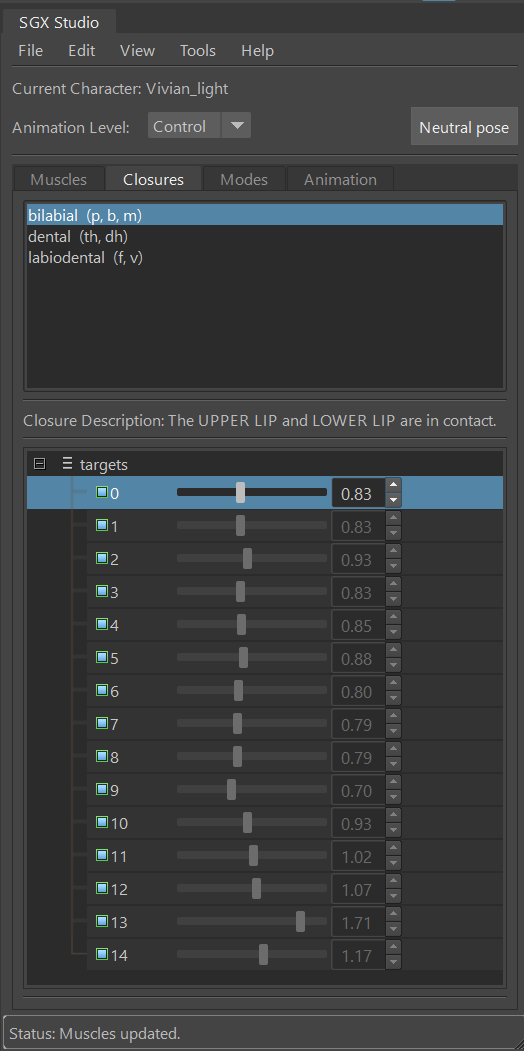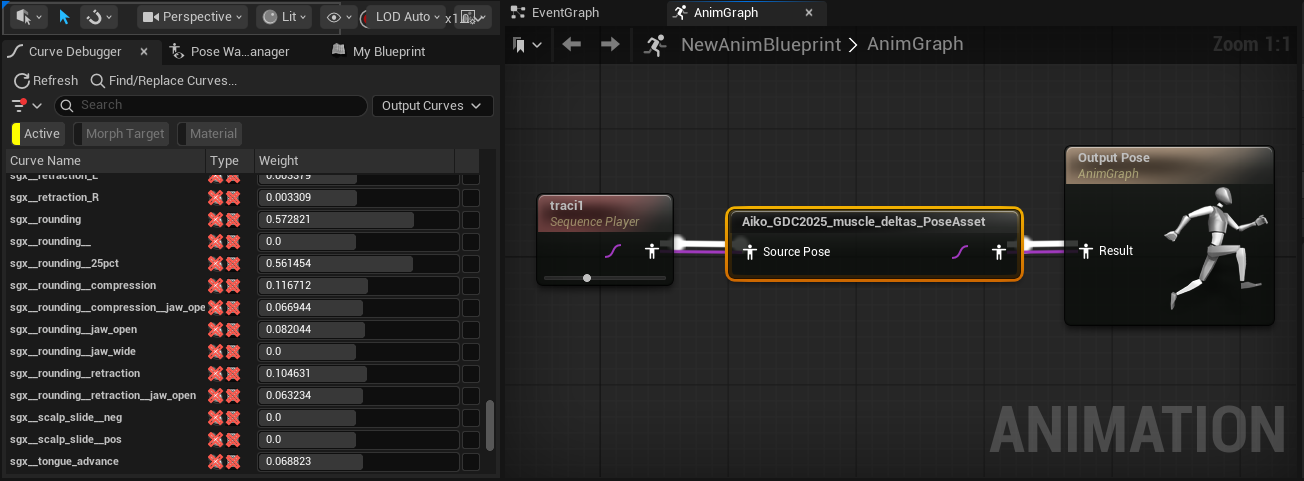What's new in SGX 4.5?
These are the feature highlights of SGX 4.5:
See release notes for a full list of improvements and fixes.
Character setup optimization
SGX 4.5 simplifies character setup and gives the user more control. In particular:
Character setup is now training-free: there is no neural network to train for the character. Previously, this training step was done by our team. Now that dependency no longer exists.
Character control files are now smaller, due to the absence of the neural network.
Users can now fine-tune critical aspects of the character’s lip sync through the new Closures Editor in SGX Studio. This involves refining Closures, such as lips coming together for p, b and m.

Closures Editor in SGX Studio Maya
Note that character control files created with SGX Studio 4.5.0 or later are compatible with SGX Production Tools 4.5.0 or later.
Unreal features expanded
The SGX Studio Unreal Engine plugin has many more features, putting it close to feature parity with the Maya version (the main exception being that muscle poses cannot be edited in Unreal).
The plugin now includes two new interfaces:
Muscles panel for access to muscle activation sliders
Closures panel for editing closures
A variety of new items have been added to the menu. See Menu Functions (UE) for details. The new items include:
Import > Modes
Set neutral pose
Reset reference pose
Tools menu
Print muscles
Print animation targets
Key muscle poses
Key muscle deltas
Create muscle deltas PoseAsset
Key expressions
Show reference pose
Reset reference pose at loading
The command-line interface has a new function: SGXImportPose. See Command-line Interface (UE).
Pose-based animation
SGX Studio normally imports animation by keying animation targets. In SGX 4.5, a new import mode has been added, instead keying Unreal Engine’s Animation Pose Assets. SGX muscle displacements are converted to Pose Assets using the new Key muscle deltas function. Then SGX Events can be imported as weights on those poses, using the new Pose Weights animation import mode. This approach gives animators full visibility of the underlying poses involved in the animation.

Reference pose control
The reference pose is the base pose to which animation is added. Previously, it was possible for this to differ between Maya and Unreal. In SGX Studio 4.5, the reference pose is now retained across platforms, so that imported animation is guaranteed to look the same in all versions of SGX Studio.
To provide additional flexibility, there is also an option, Reset reference pose at loading, which automatically changes the reference pose to the local scene pose. This is particularly useful when applying an existing character control file to a new character. The new character might have the same rig but a different reference pose.
SGX Director improvements
Improvements in the SGX Director user interface include:
Steppers and drop-down menus are protected from accidental edits caused by scrolling
Muscle activations are now displayed in the event editor

Language improvements
SGX 4.5 performs better handling of unrecognized characters and numerals in transcripts, for reduced processing errors and better phonetic analysis.
Additionally, along with SGX 4.5, a set of new language modules has been released, with the following improvements:
Korean 2.0
Pronunciation improvements
Support for English words in transcripts, written in Latin characters but articulated with Korean pronunciation
French 1.4
Pronunciation improvements
More robust handling of transcripts
Italian 1.4
Pronunciation improvements
Support for diacritics in transcripts
More robust handling of transcripts
Multiple languages update
English_GB_EAW 1.3, English_GB_SCT 1.3, English_US 2.3, German 1.3, Polish 1.4, Portuguese 1.3, Spanish_ES 1.3, Spanish_MX 1.3
More robust handling of transcripts
